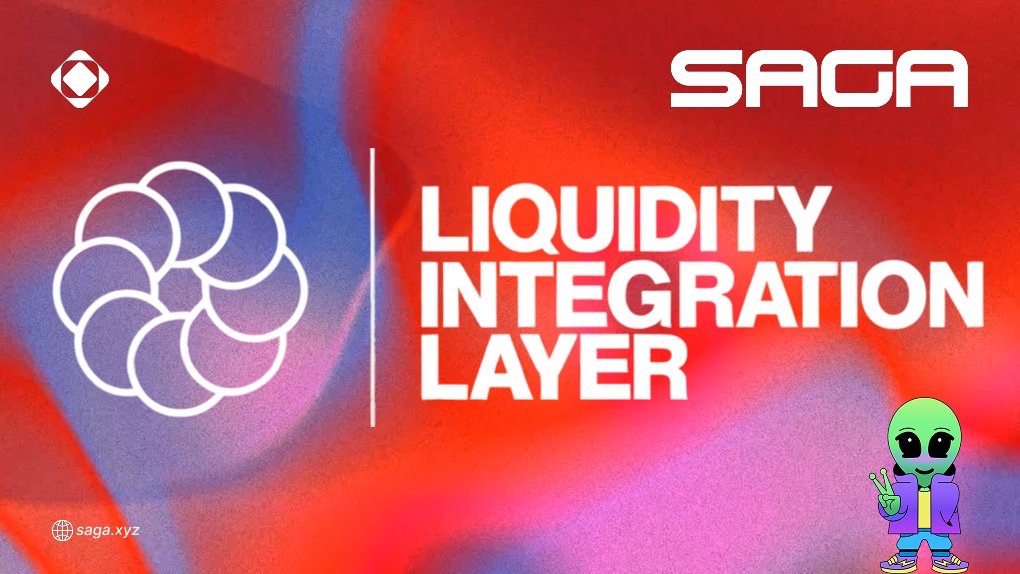Saga.xyz, a pioneering Layer 1 blockchain platform designed for launching application-specific blockchains (chainlets), has officially launched its Liquidity Integration Layer (LIL), marking a significant milestone in the evolution of decentralized finance (DeFi). Announced earlier this week, the LIL integration promises to streamline liquidity across multiple blockchain ecosystems, offering developers and users a seamless, gasless trading experience. The launch, which went live on February 28, 2025, has sparked excitement across the crypto community, with early adopters already exploring its capabilities.
The Liquidity Integration Layer is Saga’s response to one of DeFi’s most persistent challenges: liquidity fragmentation. As blockchain networks proliferate, assets and liquidity often remain siloed, requiring complex bridging solutions that incur high gas fees and delays. LIL addresses this by automatically connecting every Saga chainlet to a unified liquidity hub, eliminating the need for manual bridge configurations. This innovation ensures instant access to tokens, services, and applications across Saga’s ecosystem and beyond, integrating with major networks like Ethereum and Solana.
A standout feature of LIL is its deployment of Uniswap V3 on a Saga chainlet, marking the first canonical instance of this decentralized exchange (DEX) on an appchain. Unlike traditional setups, this integration offers a completely gasless trading experience, a groundbreaking step toward making DeFi more accessible. “This isn’t just about a DEX—it’s a turning point for DeFi on appchains,” Saga stated in a recent post on X, emphasizing the broader implications of LIL for developers building scalable, liquidity-rich ecosystems.
The launch aligns with Saga’s Mainnet 2.0 rollout in December 2024, which laid the groundwork for LIL’s infrastructure. By combining LIL with a novel token economic model, Saga incentivizes liquidity providers and automates cross-chain transactions, shifting away from transaction-fee-based revenue to a liquidity-driven approach. Industry observers liken this to traditional payment networks that thrive on transaction volume, suggesting Saga could redefine how blockchain economies operate.
Early feedback from the community has been positive, though not without hiccups. Posts on X indicate some users encountered difficulties with swapping, bridging, or adding liquidity in the initial days post-launch. In response, guides have emerged—such as one shared by a user under the handle @fluffiestflufff—offering step-by-step instructions to navigate LIL via tools like Oku Trade. Saga’s team has encouraged developers to begin building on Mainnet 2.0, promising seamless integration into LIL’s environment as it matures.
Rebecca Liao, CEO of Saga, highlighted the platform’s vision in a statement last year: “Our goal is to simplify the complexities of building in Web3.” With LIL now operational, that vision appears closer to reality. The platform, which has raised $13.5 million to date from investors like Placeholder and Longhash Ventures, boasts an ecosystem of over 380 projects, including gaming and entertainment applications. This robust foundation positions LIL to have immediate asset flow, a critical factor for its success.
Analysts see LIL as a potential game-changer, particularly for regions like the Maldives, where blockchain adoption could bolster local economies reliant on tourism and imports. While Saga’s announcement didn’t specify geographic focuses, the platform’s emphasis on scalability and accessibility could resonate with small island nations seeking innovative financial solutions.
As Saga continues to refine LIL—slated for further enhancements throughout Q1 2025—the crypto world watches closely. If successful, this integration could set a new standard for cross-chain liquidity, challenging established players and empowering developers to create vibrant, interconnected DeFi applications. For now, Saga’s bold step forward signals a future where liquidity flows as freely as the tides around the Maldives’ shores.



